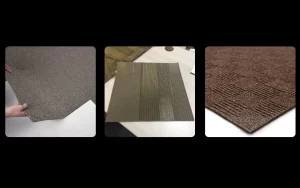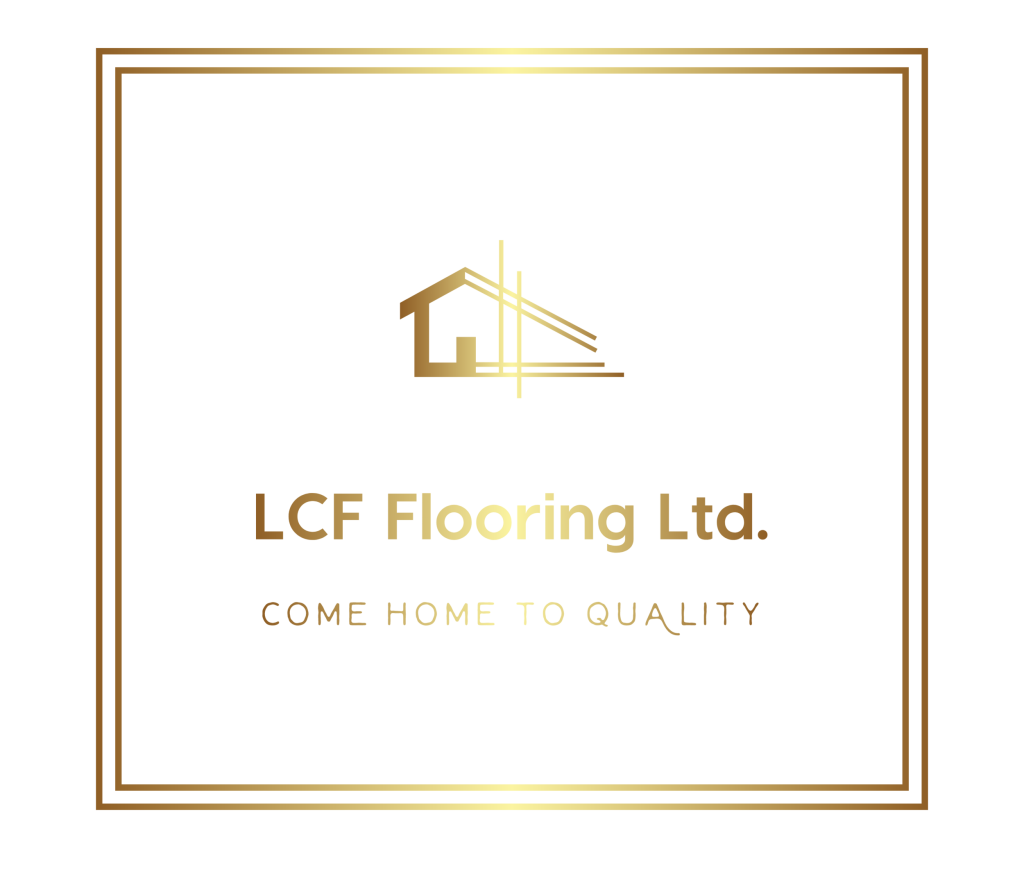Kitchens and bathrooms are two of the most used spaces in a person’s home. This fact is why we always want people to choose a backsplash that they love – you’ll see it every day! In this article we will outline the 4 most common backsplash tile types, and the best ways to make them look just how you imagine
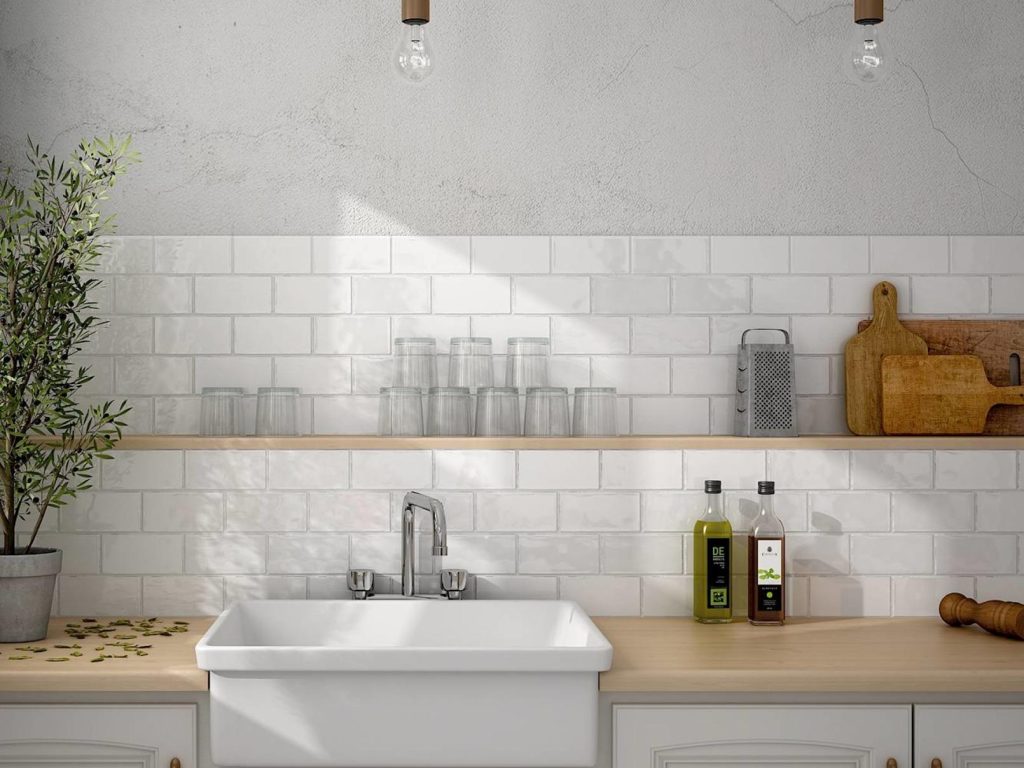
1. Subway Tile & Lay Patterns
When you think of a backsplash tile, the first thing that may come to mind is a subway tile with a brick lay design. This is the most common backsplash tile option, and not for no reason! Subway tile has a very clean and often minimalist look to it. People commonly choose subway for their backsplash because it is simple and non-intrusive – it is one of the best neutral backsplash tile choices!
There are many variations of subway tile, from the standard smooth glossy finish to hand-painted sparkly matte finishes. Some subway tiles can be textured with a rough brick exterior, and others are smooth and have a bit of a wavy surface. They come in any colour you can imagine, and many sizes. The most common sizes for subway tile are 3×12, 3×6, and 4×16, though you can get nearly every size imaginable.
The most common pattern used with subway tile is the 50/50 brick lay, and this pattern always looks beautiful! It is classic and doesn’t take away from other features in the kitchen or bathroom. Another popular pattern used on subway tile is the 70/30 offset pattern; this is the best pattern to use on bathroom floors and large areas.
If you want to use a subway tile, but find the standard horizontal patterns to be a bit dull, there are a few other options. A chevron or 45 degree diagonal lay pattern can really add character to your kitchen or bathroom, and this pattern will work with most sizes of subway tile.

An angled design will instantly catch your eye when you enter the room, and is one of the best ways to turn your backsplash into the feature wall of the room. If you’re not so keen on the angles and prefer something more gridlike, a basketweave pattern may suit you! This pattern works best with 3×6 subway tiles, and can add a bit more energy to a space without overdoing it.
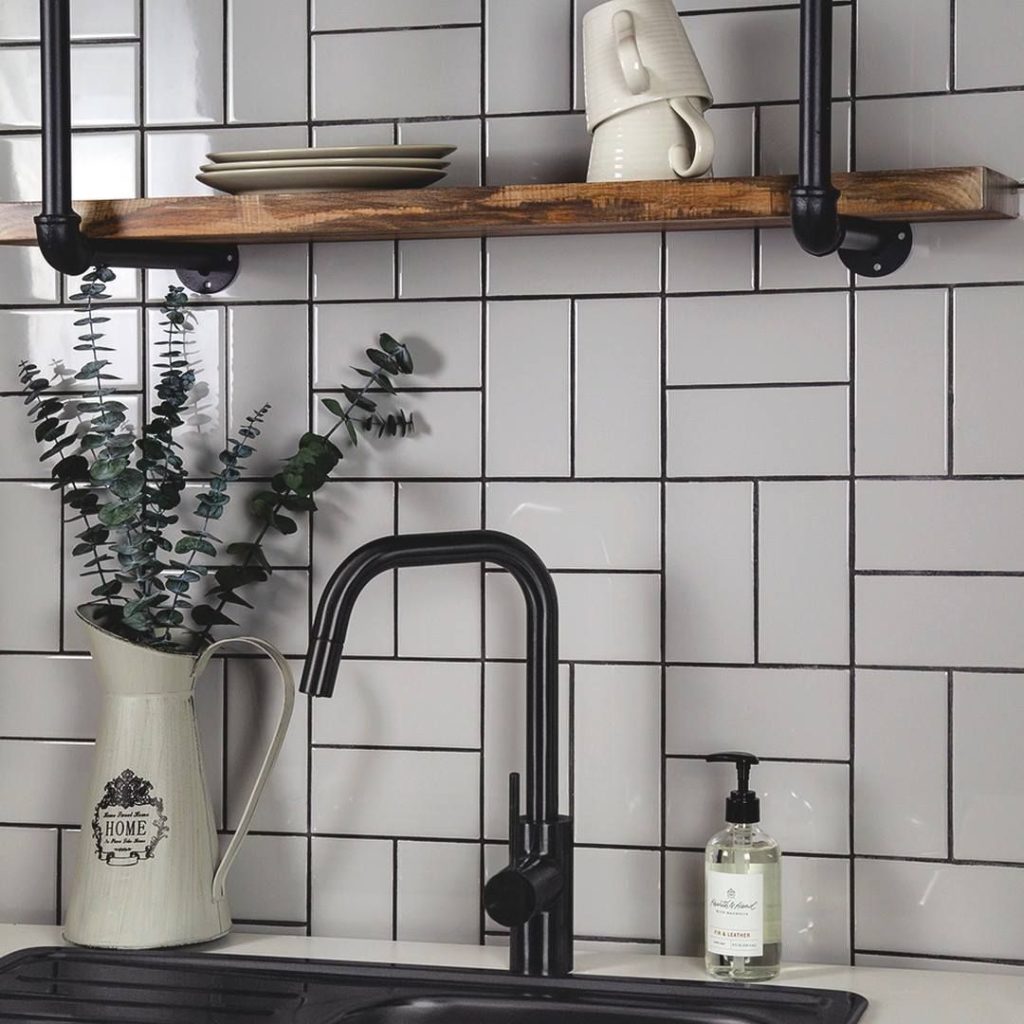
2. Mosaics
The next most popular type of backsplash tile is a mosaic! There are virtually limitless options for mosaic tiles, meaning that anyone can find the look they are dreaming of. Mosaics are quite versatile, and can offer a wide variety of appearances for every design choice. Popular mosaics include: hexagons, lanterns, strips, and scallops. Our personal favourite is the hexagons, because they offer such a unique appearance that isn’t available with other shapes.
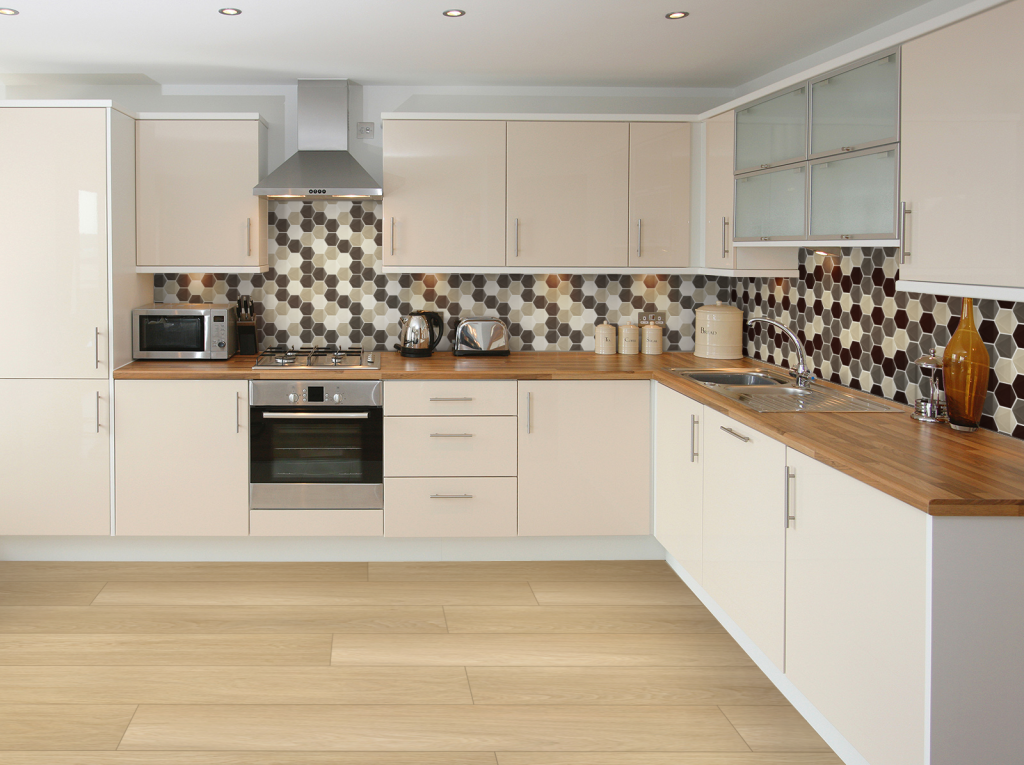
There are not any specific layout patterns associated with mosaics – these are usually incorporated into the design. However, it is common for people to include multiple colours of the same mosaic in their backsplash. This is also common with tiles that are available in both a matte and polished finish!
3. 12×24 & Larger Sizes
If you prefer less grout lines, or if your backsplash is a large area, a larger size tile may be the best fit for you. The most common larger size is 12×24, especially when used on the floor. These tiles are a great choice as they come in multiple finishes and many colours and designs. If you prefer a natural stone look or a tile with marbling, this size has the largest range of options!
Any tile that is larger than 12×24 is usually not recommended for a backsplash, though there are unique circumstances that may allow larger sizes to be used. The recommended layout pattern for this size is the 70/30 offset, as the dimensions of the tile make it difficult to achieve a perfect 50/50 brick pattern. If you prefer, a 1:1 grid layout is also possible with these sizes. See below.
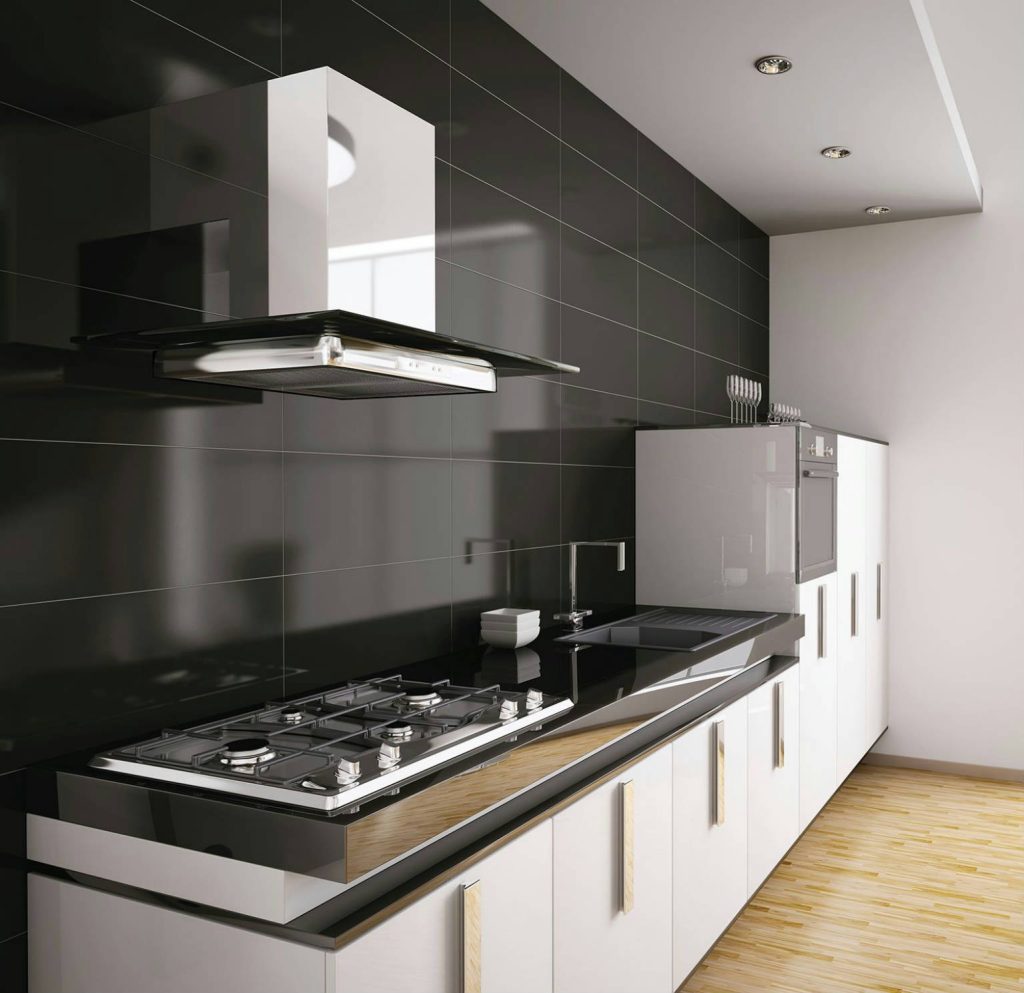
4. Quartz Backsplash
The least common, but most impressive type of backsplash is a quarts backsplash! It is a unique design choice, and makes a bold statement when used properly. Quartz is most commonly seen in a kitchen, and continuing it onto the walls makes for a stunning visual that you don’t see too often. The main benefit of choosing quartz instead of a backsplash tile is the lack of grout lines!
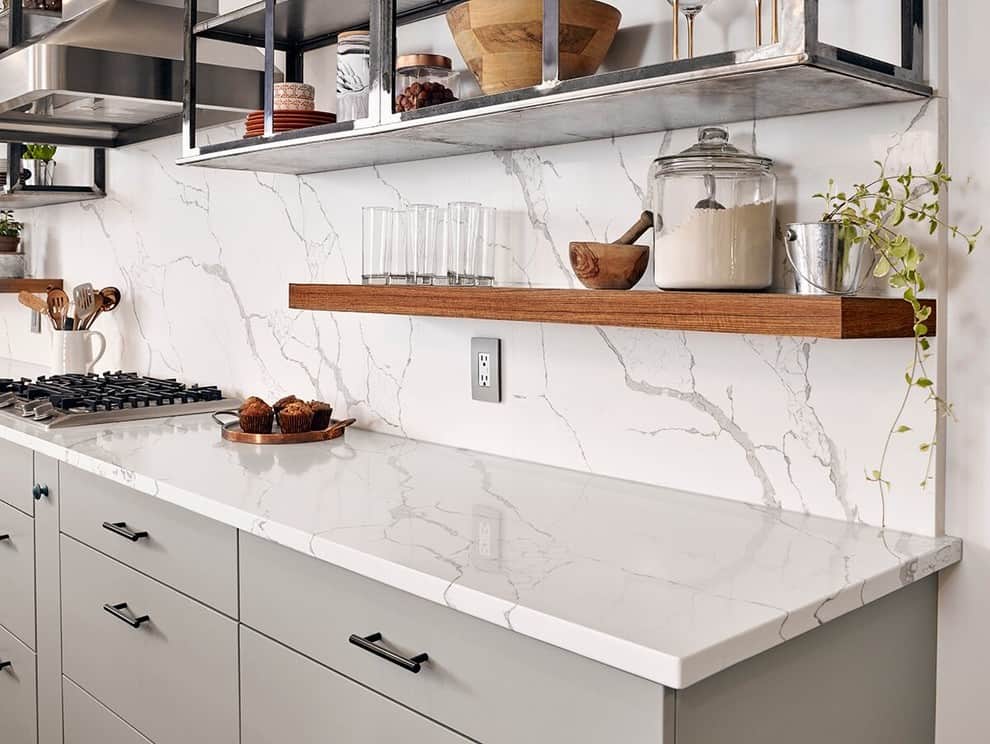
Which backsplash tile type would you choose? We can help you with any of them, here at LCF Flooring.



